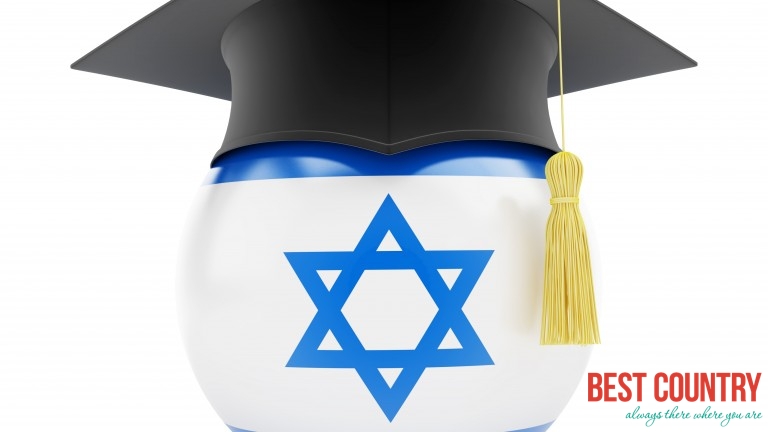Israel - Educational System

Free and compulsory education begins with two years of nursery school starting at age three, and a year of kindergarten at age five.
The addition of two years of nursery school was instituted with a change to the Compulsory Education Law in 1984 (Iram and Schmida).
Also the primary school years are free and compulsory (grades 1-8). Since about 1963, grades 9 and 10 have also been free and compulsory.
Secondary education continues through grade 12 and is free, though not compulsory.
There are three types of high schools: the academic high school prepares students for higher education and culminates in a matriculation certificate;
the vocational technical high school prepares students for technical or practical careers in engineering and other fields;
and the comprehensive high school offers both types of programs.
At the postsecondary level, there are training institutions of several different kinds, offering preparation for primary school teaching, nursing, and other technical and semiprofessional careers.
There are seven universities offering bachelor's, master's, and Ph.D. degrees. Admission to a university requires that students pass the bagrut, or national matriculation examination.
The academic year runs from September through July, 6 days per week, with about 35 hours per week devoted to school. The language of instruction in Jewish schools is Hebrew; the Arab schools use Arabic.
All students study English beginning in the primary school years, either in grade 5 or grade 6.
Several strategies have been used to support computer use in the schools, beginning in 1998 with the installation of computers into virtually all primary schools across the country (Schramm).
The second step is intended to assist with connections to the Internet and to in-service training for teachers.
The curriculum throughout the Israeli educational system is highly standardized and centralized through the Ministry of Education and Culture.
The Ministry over-sees all levels including higher education; the latter is controlled by the Council for Higher Education.
The curriculum addresses the diversity of the population in a number of different ways above and beyond the basic divisions among the state and state-religious schools and private schools.